Administrators, faculty, staff, and students throughout the university are working to research and implement sustainability. Central to this effort is the Initiative on the Environment and Sustainability, a campaign launched to support interdisciplinary research and teaching in all seven of Stanford schools and key institutes. Through the initiative, the Stanford community is working to ensure future generations can live well on our planet.
The Department of Sustainability and Energy Management (SEM) leads initiatives in campus infrastructure and programs in the areas of energy and climate, water, transportation, green buildings, and sustainable information technology, as well as various special initiatives. The Office of Sustainability connects campus organizations and entities and works collaboratively with them to steer sustainability initiatives to fulfill President Hennessy’s vision that sustainability will, "become a core value in everything we do." The office works on long-range sustainability analysis and planning, evaluations and reporting, communication and outreach, academic integration, conservation behavior and training, and sustainability governance strategy.
Major support for these efforts is provided by various operational units within Land, Buildings, and Real Estate (LBRE), Residential & Dining Enterprises, Stanford Recycling Center (run by Peninsula Sanitary Service, Inc., PSSI), University Communications, Government and Community Relations, Woods Institute for the Environment, Precourt Energy Efficiency Center, School of Medicine, Graduate School of Business, School of Earth Sciences, Alumni Association, and numerous student organizations. From utilities to food systems, there are hundreds of professionals throughout the Stanford community who are involved with sustainability projects in their daily work. The full-time sustainability professionals are listed below, organized by group name:
Department of Sustainability and Energy Management |
||||
|---|---|---|---|---|
 |
Joseph Stagner Executive Director, SEM |
Joe leads the Sustainability and Energy Management Department, which includes 90 staff members in Utilities, Parking & Transportation, Business Services, and the Office of Sustainability. He co-chairs the Sustainability Working Group and leads the university’s long-range sustainability infrastructure planning and implementation. | ||
Elsa Baez Staff Assistant, SEM |
Elsa supports the Executive Director, the Office of Sustainability, and Facilities Energy Management. She also assists with event coordination and organization. | |||
Office of Sustainability |
||||
 |
Fahmida Ahmed Associate Director, Office of Sustainability, SEM |
Fahmida leads the Office of Sustainability and the campus program Sustainable Stanford. She co-chairs the Sustainability Working Group, connects the Sustainability Working Teams, coordinates implementation of sustainability projects, supports Stanford’s long-term resource infrastructure planning, and manages the office’s communications and evaluation programs. | ||
 |
Jiffy Vermylen Sustainability Coordinator, Office of Sustainability, SEM |
Jiffy supports further development and implementation of the campus‐wide Sustainable Stanford initiative. Her portfolio includes roll-outs of the department/building-level conservation programs, related communications and training for the campus community, and overall program evaluation standards and criteria, especially for the built environment. | ||
Jemal Diamond Sustainability Outreach Coordinator, Office of Sustainability, SEM |
Jemal works to advance awareness and implementation of campus-wide Sustainable Stanford programs. His portfolio includes publications, outreach campaigns, educational interfaces for the office's programs and services, and green report cards for Stanford schools and departments. | |||
Energy Management |
||||
Energy Services |
||||
 |
Robert Reid Associate Director, Energy Services, SEM |
Robert manages energy services at Stanford, which entails the production of electricity, steam and chilled water supplies on campus. His role includes oversight of the procurement and production of those commodities as well as mechanical operations of the Central Energy Facility. | ||
Power Systems |
||||
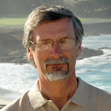 |
Rich Bitting Associate Director, Power Systems, SEM |
Rich directs the Power Systems department, which includes responsibility for the campus electrical distribution system and street lights. Within the department, a staff of engineers, supervisors, and technicians ensure that the campus has an efficient and reliable supply of electricity. | ||
Thermal Energy Distribution |
||||
 |
Dean Murray Associate Director, Steam Systems, SEM |
Dean manages the steam, hot water, and chilled water underground piping system distribution. His department includes steamfitters, the Steam Shop supervisor, and engineers for the distribution piping systems. Dean ensures delivery of heating and cooling services to academic buildings, housing and dining facilities, athletic facilities, and the Stanford Medical Center. | ||
Facilities Energy Management |
||||
 |
Gerry Hamilton Associate Director, Facilities Energy Management, SEM |
Gerry directs the activities of Stanford’s Facilities Energy Management (FEM) program, including the operation of campus building energy management systems, oversight of the University’s Sustainable IT program, and supervision of building energy retrofit projects. The program ensures that buildings and associated processes are operated efficiently and that new facilities incorporate best practices for energy use. | ||
Joyce Dickerson Director, Sustainable IT, SEM |
Joyce leads Sustainable IT, the university-wide effort to reduce carbon emissions associated with computing infrastructure. Her focus includes personal, administrative, and high performance computing, and targets equipment from desktops to data centers. Joyce functions as a liaison between LBRE and IT Services to develop integrated solutions for energy efficiency challenges. She also works with departments campus-wide to identify and implement Sustainable IT programs. | |||
 |
Scott Gould Senior Energy Engineer, Building Energy Systems Commissioning, SEM |
Scott works closely with campus stakeholders to identify energy efficiency opportunities in new construction projects and to ensure the design team of architects and engineers understand energy and water goals established for new projects. He also leads renewable energy projects on campus, including a study of the total potential for solar energy on campus, and installation of several photovoltaics systems, including the 30kW system at Reservoir 2 in the Stanford foothills and the 40kW system at the Hoover House. | ||
 |
Marc Epstein Manager, Facilities Energy Systems Operations, SEM |
Marc supervises the university’s controls engineers and technicians. He leads ongoing support of the centralized Energy Management and Controls System (EMCS) and various Building Management Systems (BMS). Marc oversees multiple programs aimed at improving controls integration, enhancing real-time performance monitoring, and ensuring high quality building commissioning. | ||
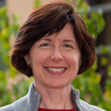 |
Susan (Kulakowski) Vargas Manager, Facilities Energy Efficiency, SEM |
Susan works to improve the energy performance of the university’s 15 million square feet of existing buildings. Susan administers the Energy Conservation Incentive Program (ECIP) to promote conservation and sustainable procurement. She oversees both a $1 million program and a $15 million capital program to identify, coordinate, and fund efficiency retrofit projects. | ||
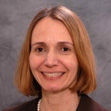 |
Leslie Kramer Senior Energy Engineer, Facilities Energy Management, SEM |
Leslie focuses on improving the energy efficiency of the largest energy-consuming buildings on campus through the Whole Building Retrofit Program. She works with stakeholders within Facilities Energy Management, Zone Management, and operational entities to identify and implement projects that save energy and money while maintaining or improving overall building performance. She also helps track the persistence of energy savings from these projects over time. | ||
 |
Shalini Singh Energy Engineer, Facilities Energy Management, SEM |
Shalini supports the conservation and technology efficiency projects across Stanford's existing building portfolio. She supports implementation of the Energy Retrofit Program and the Whole Building Retrofit Program. Shalini works across groups in Zones Management, Building Energy Systems, and Operations to align energy efficiency goals. | ||
Water Services and Civil Infrastructure |
||||
 |
Tom Zigterman Associate Director, Water Services & Civil Infrastructure, SEM |
Tom manages a group of engineers, scientists, and water technicians who are responsible for operation of Stanford’s water supplies, including domestic water, surface water, waste water, and storm drainage systems, as well as other civil infrastructure including dams, bridges, and roads. He also chairs the Water Sustainability Working Team, which is currently planning the long-term sustainable management of Stanford’s water supply and demand. | ||
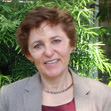 |
Marty Laporte Associate Director, Environmental Quality & Water Conservation, SEM |
Marty manages Stanford’s Environmental Quality and Compliance Program for campus waters, wastewater, soils, Facilities and Utilities hazardous materials, and underground storage tanks. She also manages Stanford’s Water Conservation Program, which tests new technology, including high-efficiency fixtures, and she oversees the implementation of campus-wide upgrades and new building water efficiency standards. | ||
Parking and Transportation |
||||
 |
Brodie Hamilton Director, Parking & Transportation Services, SEM |
Brodie leads Stanford’s transportation programs, which include parking and retail operations, an award-winning transportation demand management program, a bicycle program, the Marguerite Shuttle service, charter services, transportation program planning and development, and marketing communications. He is a member of Stanford’s Sustainability Working Group. | ||
 |
Lisa Kwiatkowski Manager, Transportation Demand Management and Outreach, SEM |
Lisa leads the marketing and communications efforts for Stanford’s Parking & Transportation Services department, with a focus on promoting alternative transportation through Stanford’s Commute Club and other incentive programs. These efforts have helped reduce the university’s employee drive-alone rate from 72 percent in 2002 to 48 percent in 2010. | ||
 |
Rachel Maiss Transportation Demand Management Coordinator, SEM |
Rachel supports the university’s transportation demand management program and coordinates alternative transportation promotion efforts at Stanford Research Park. She also helps members of the Stanford community understand the many alternative travel options available to them. | ||
 |
Ariadne Scott Bicycle Program Coordinator, Parking & Transportation Services, SEM |
Ariadne leads the bicycle program for Stanford’s 8,000 acre campus, which is designated a Gold Level Bicycle Friendly Community (2008-2011) by the League of American Bicyclists (LAB). She is LAB Road 1 certified, co-teaches bike safety classes, lives “car free,” and supports and encourages student bicyclists and the 18% of employees who bike-commute to and from Stanford. | ||
Purchasing & Payable Services |
||||
Stefani Fukushima Manager, Purchasing Operations |
Stefani leads sustainability efforts for Stanford’s Purchasing & Payable Services Department, with a focus on campus-wide Environmentally Preferred Purchasing (EPP) strategies. Her work includes programs that support resource conservation, order consolidation, the purchase of reusable goods, and identification of sustainable alternative products and services. Stefani works closely with university departments and other central offices to negotiate supplier and service provider contracts that support the university’s sustainability initiatives. | |||
Residential & Dining Enterprises |
||||
Matt Rothe Sustainability Coordinator, Stanford Dining Services |
Matt works closely with other employees of Stanford Dining on sustainable food procurement, waste reduction, on-campus food production, and creating awareness through events and educational opportunities. He also manages student gardeners and interns, assists faculty with classes related to food and agriculture, and coordinates with other staff to promote sustainable initiatives. | |||
School of Earth Sciences |
||||
Sarah Wiederkehr Farm Educator, Earth Systems |
Sarah teaches a number of Sustainable Agriculture courses for Stanford's Earth Systems program. She manages the teaching space at the Stanford Farm and is actively involved with student gardening organizations on campus, including the Dining Hall Garden Initiative and the student-run Campus Gardening Initiative. | |||
Campus Planning and Design |
||||
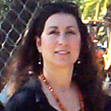 |
Catherine Deino Blake Associate Director, University Architect/Campus Planning & Design |
Cathy directs landscape design and site furnishings at Stanford including the preparation of campus plans, design guidelines, and campus standards. She provides input into and reviews all major capital project designs and develops conceptual designs for campus projects including: landscape plantings; malls; courtyards; plazas; vehicular, bike and pedestrian travel; and parking. | ||
 |
Eva Rose Leavitt Campus Planner, University Architect/Campus Planning & Design |
Eva supports the development of site and design guidelines for new buildings, landscape plans for small projects, implementation of campus furnishing and paving systems, and advocates for responsible stewardship of the land through sustainable design. She works with the Campus Landscape Architect on the implementation of outdoor infrastructure programs. | ||
Peninsula Sanitary Service, Inc. |
||||
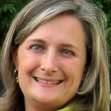 |
Julie Muir Community Relations Manager, PSSI / Stanford Recycling Center |
Julie leads the construction and demolition waste diversion program and the food waste collection and composting program. She also continues to expand the campus recycling services. She advocates for a zero waste campus through a comprehensive program of waste reduction, reuse, recycling, composting, and sustainable purchasing. Julie has lead over 20 audits of campus trash to provide the Stanford community with meaningful data to improve targeted waste reduction. | ||
